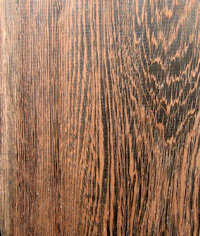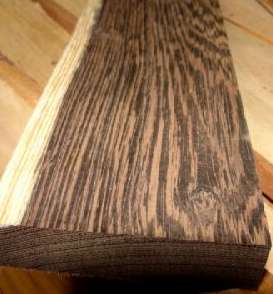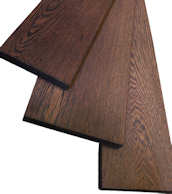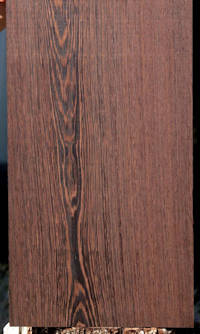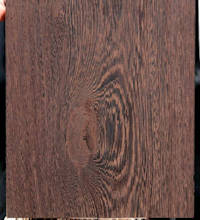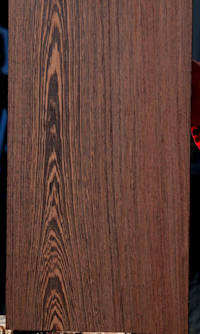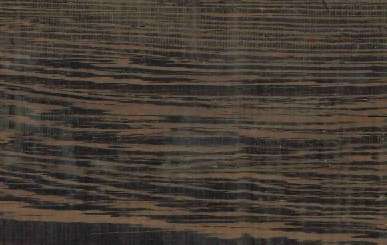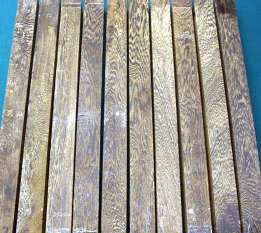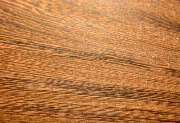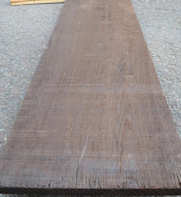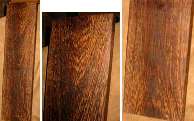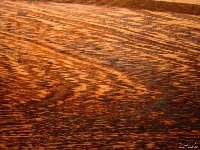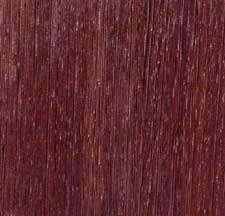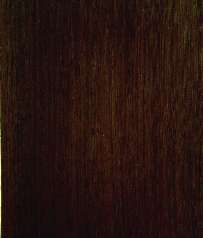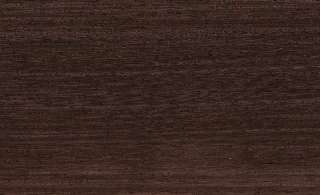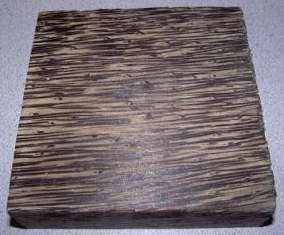the REST of the pictures on this page will give you a better overall feel for this wood
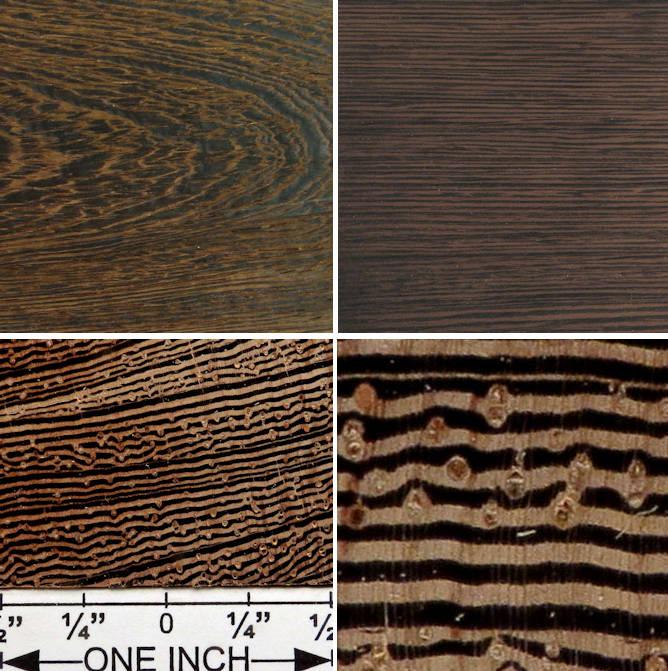
wenge / Millettia laurentii
3" x 3" flat cut, 3" x 3" quartersawn, 1" wide end grain, and a 1/4" x 1/4" end grain closeup.
Diffuse porous with exceptionally fat confluent parenchyma lines that often are so long that they seem like banded parenchyma (but are not). Pores are large and sparse and fall within the confluent parenchyma lines (which themselves may go on for long stretches without any pores). Growth rings are hard to distinguish and rays can be hard to see even at 10X.
A somewhat splintery, hard, porous African hardwood. The veneer tends to be somewhat fragile and will split easily along the grain, especially when quartersawn. The color is yellow/brown when first milled but over a month or two it darkens to brown with dark streaks and over a long time it darkens to a deep chocolate brown.
There is an obvious similarity of appearance between wenge and panga panga, and I have created a small page to discuss the differences, to the extent that one can see diferences. It is here: wenge vs panga panga. It should also be noted that the botanical designation Millettia stuhlmannii is sometimes used (incorrectly, I believe) for wenge whereas it really should only be used for panga panga













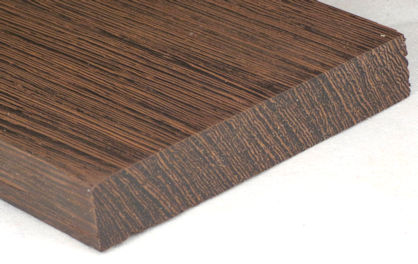




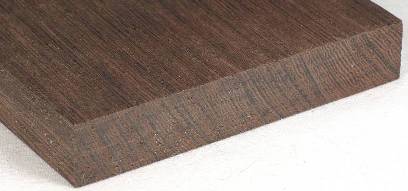
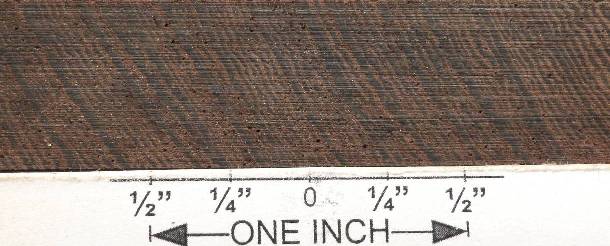






































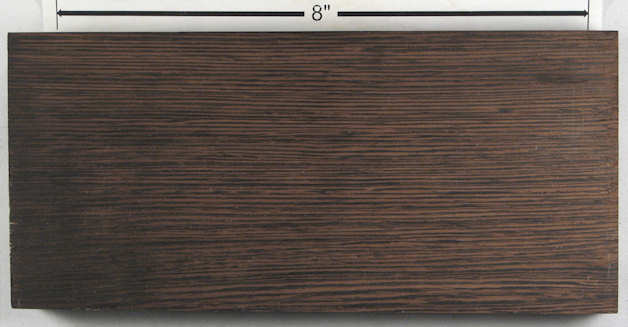

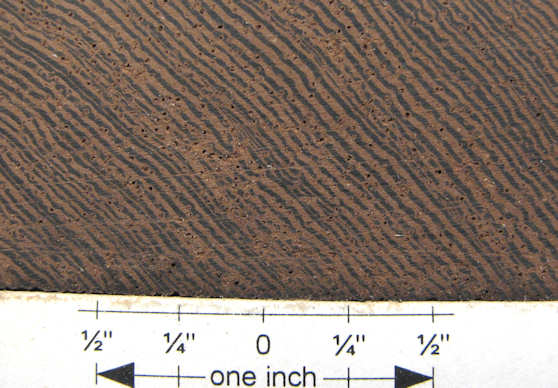











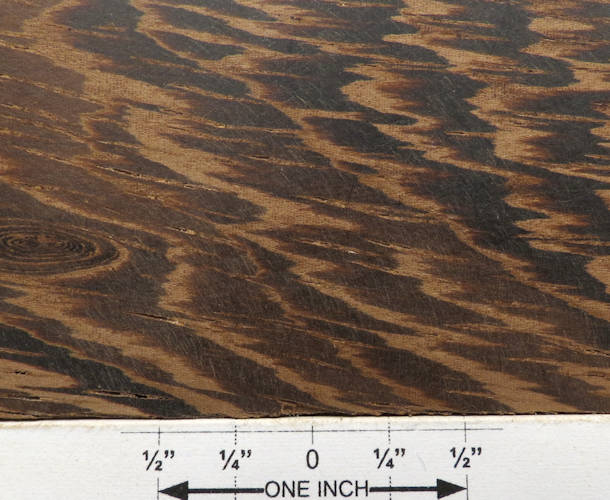
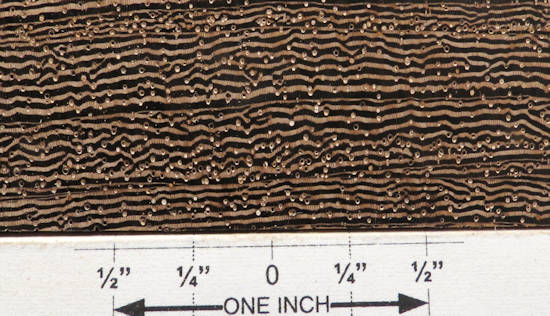



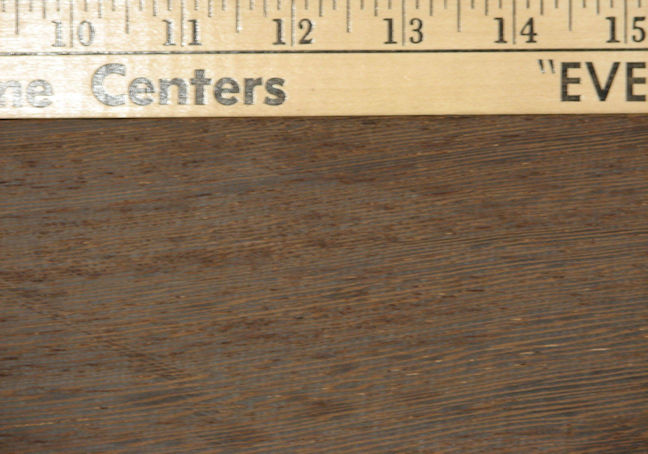






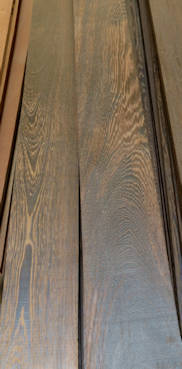













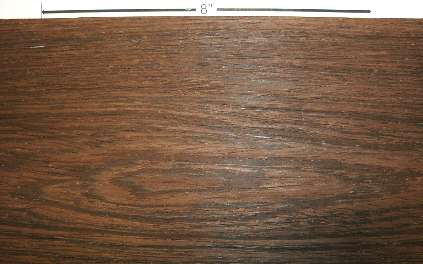









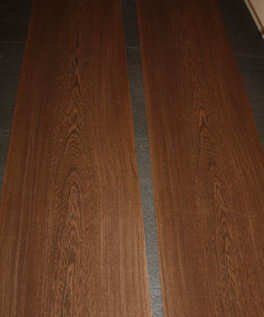
 NOT A RAW WOOD COLOR
NOT A RAW WOOD COLOR


%20wet%20dry%20s50%20web.jpg)
























